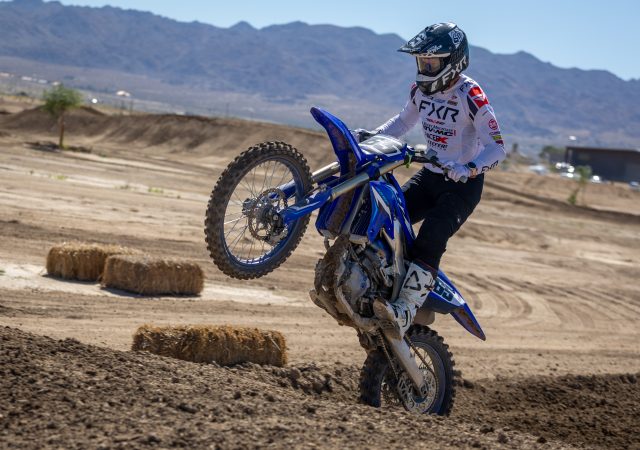
For this edition of Classic Ink, we are going to take a look back at THOR’s motocross lineup for 1991.
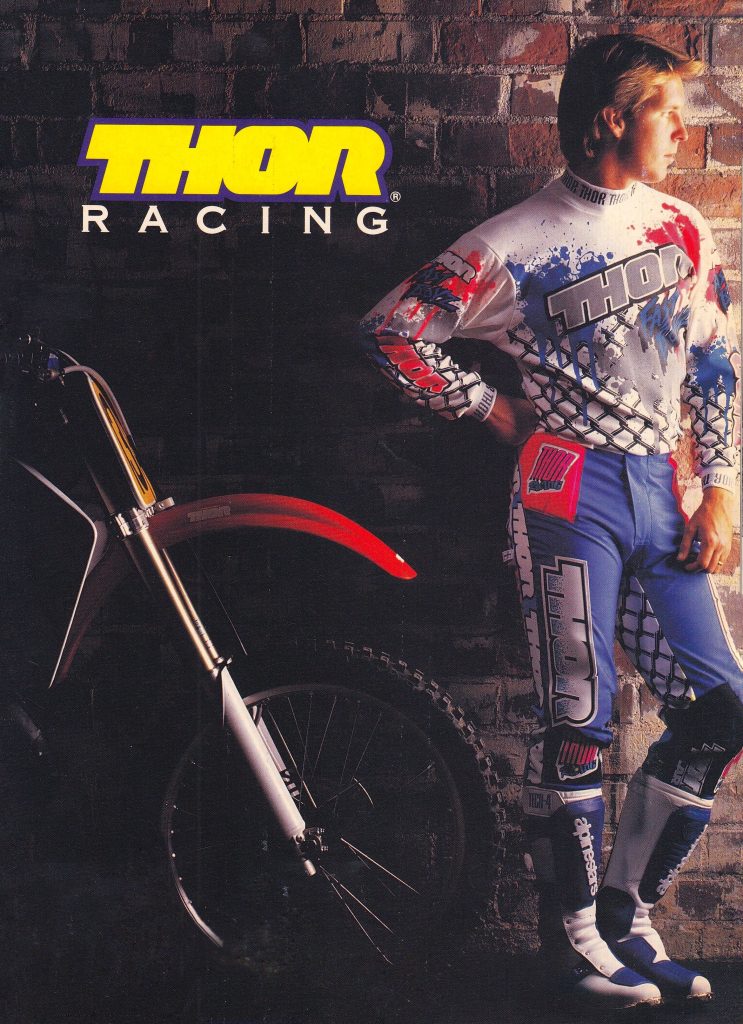 In 1991, the move of Honda superstar Rick Johnson to THOR was big news despite the struggles the seven-time champ had endured the year before. After his 1989 wrist injury, the Bad Boy was never the same, but his star remained one of the brightest in the sport. Photo Credit: THOR
In 1991, the move of Honda superstar Rick Johnson to THOR was big news despite the struggles the seven-time champ had endured the year before. After his 1989 wrist injury, the Bad Boy was never the same, but his star remained one of the brightest in the sport. Photo Credit: THOR
Originally known as Torsten Hallman Racing, THOR’s roots in the sport reach back to the 1960s. As one of the stars of the powerful Swedish Husqvarna squad, Torsten Hallman captured four 250 World Motocross titles during the 1960s and parlayed that success into a place of prominence in the aftermarket industry of the 1970s. Torsten Hallman Racing offered Hallman-branded riding leathers (when motocross gear was still made of genuine leather) and a huge assortment of other products from boots to tires as a parts distributor. They sponsored stars like Roger De Coster and played a major role in motocross style during the explosion in popularity the sport enjoyed in the 1970s.
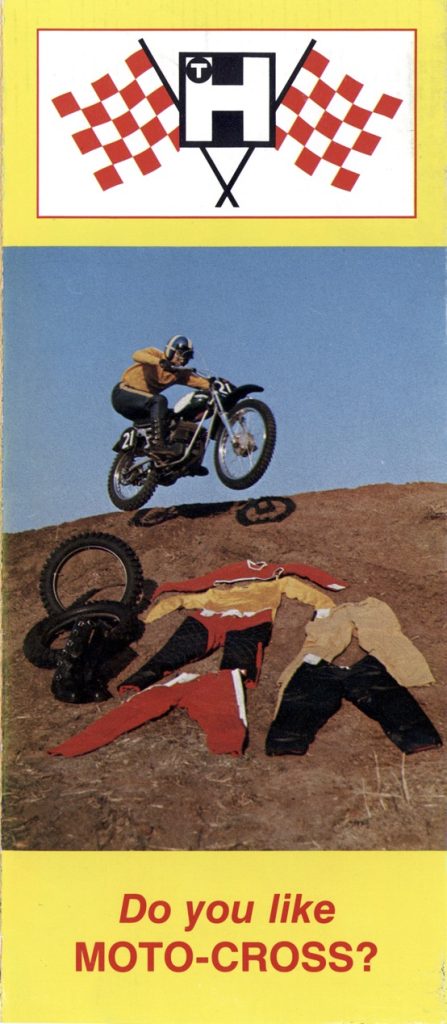 Torsten Hallman Racing (today’s THOR) is one of the OG brands of “moto-cross” gear with roots that stretch back to the 1960s. Photo Credit: Torsten Hallman Racing
Torsten Hallman Racing (today’s THOR) is one of the OG brands of “moto-cross” gear with roots that stretch back to the 1960s. Photo Credit: Torsten Hallman Racing
As the eighties rolled in, the renamed Hallman USA faded somewhat in prominence. The retirement of their megastar De Coster and the rise of competition from Fox Racing and JT Racing USA pushed Hallman out of the spotlight. Riders like George Holland and Larry Brooks were popular, but they lacked the star power of a De Coster, Bob Hannah, David Bailey, or Mark Barnett.
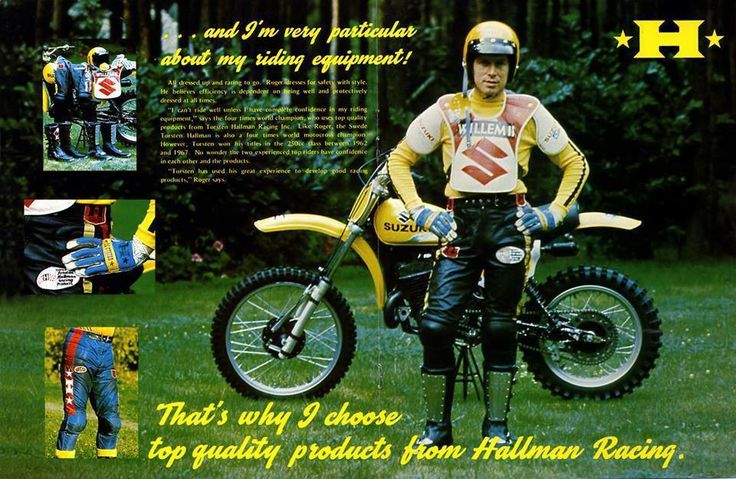 In the 1970s, Torsten Hallman Racing had the biggest name in the sport riding in their gear. Five-time World Motocross champion Roger De Coster had kids from Belgium to Buchanan Michigan wanting to race in Hallman leathers. Photo Credit: Torsten Hallman Racing
In the 1970s, Torsten Hallman Racing had the biggest name in the sport riding in their gear. Five-time World Motocross champion Roger De Coster had kids from Belgium to Buchanan Michigan wanting to race in Hallman leathers. Photo Credit: Torsten Hallman Racing
In 1988, Hallman USA once again tried a rebranding, this time moving to Torsten Hallman Original Racewear and adopting the acronym THOR. Leaning on Torsten Hallman’s Swedish roots, the brand introduced a “Viking” line of gear that was bold in color and stylish in appearance. Hiring up-and-coming riders like 125 rookie Jeff Emig and Suzuki factory star Ronnie Tichenor, THOR hoped to take a little dent out of the dominant position held by Fox, JT, and upstart contender AXO Sports.
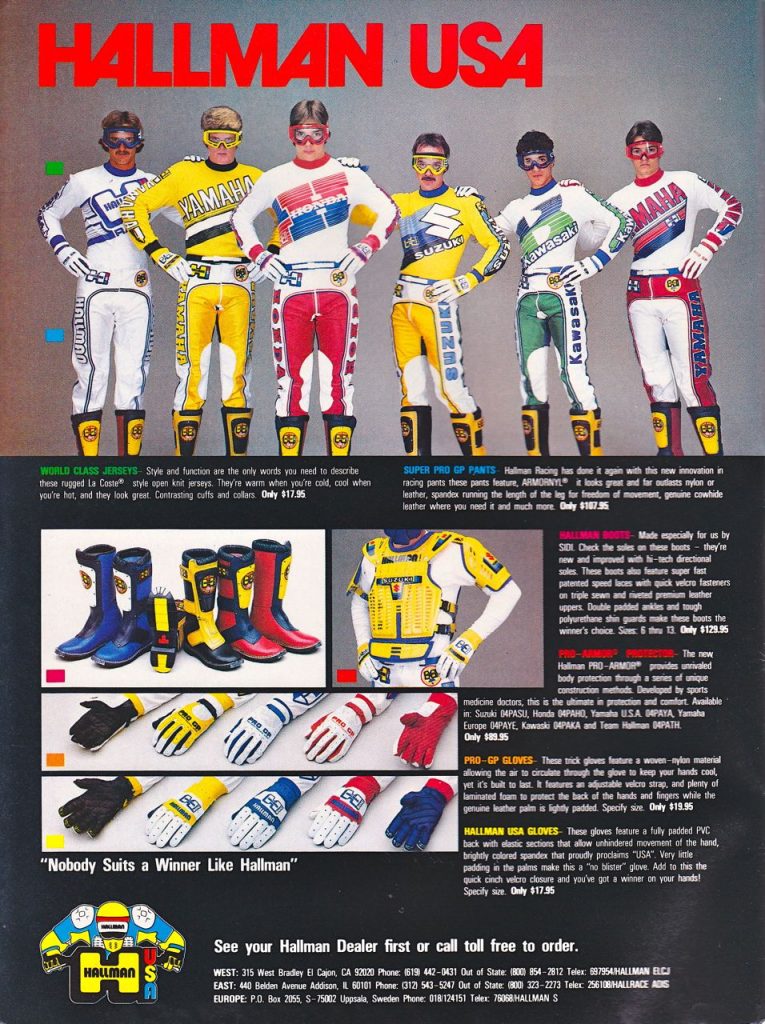 By the mid-eighties, De Coster had retired, and Torsten Hallman Racing had been rebranded as Hallman USA. Without a megastar at the front and with some questionable ad and design choices, Hallman was no longer the motocross style maker it had once been. Photo Credit: Hallman USA
By the mid-eighties, De Coster had retired, and Torsten Hallman Racing had been rebranded as Hallman USA. Without a megastar at the front and with some questionable ad and design choices, Hallman was no longer the motocross style maker it had once been. Photo Credit: Hallman USA
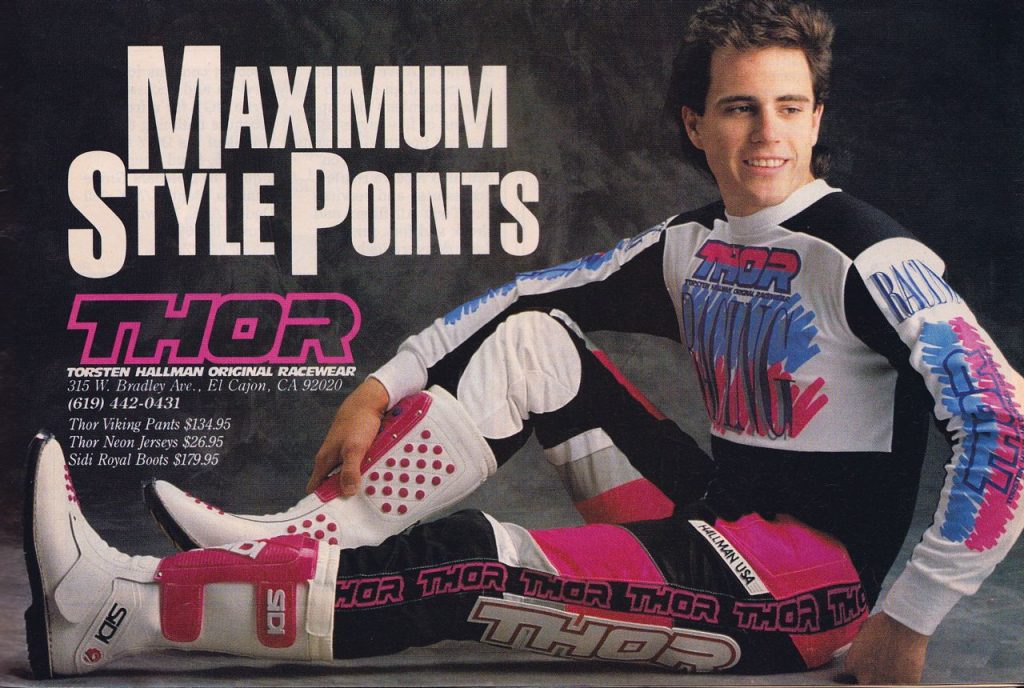 Another rebrand in 1988 added “THOR” to the motocross lexicon for the first time. Using a clever acronym of Thorsten Hallman Original Racewear, the new THOR played on Norse mythology and Hallman’s Swedish heritage to stand out in the increasingly crowded market for motocross apparel. Photo Credit: Thorsten Hallman Original Racewear
Another rebrand in 1988 added “THOR” to the motocross lexicon for the first time. Using a clever acronym of Thorsten Hallman Original Racewear, the new THOR played on Norse mythology and Hallman’s Swedish heritage to stand out in the increasingly crowded market for motocross apparel. Photo Credit: Thorsten Hallman Original Racewear
By 1991, JT Racing was no longer the juggernaut it had been in the early eighties, seeding that position to Fox Racing. Bold design choices by Pete Fox and the ascendence of mega stars Rick Johnson and Damon Bradshaw helped propel Fox Racing to the pinnacle of the sport in the late 1980s. As the 1990s began, it was Jim Hale’s AXO Sport that looked to be the brand most likely to wrest the crown away from powerhouse Fox. In 1991, AXO scored a major coup by prying Bradshaw away from Fox and focusing their entire brand strategy behind the brash kid from North Carolina.
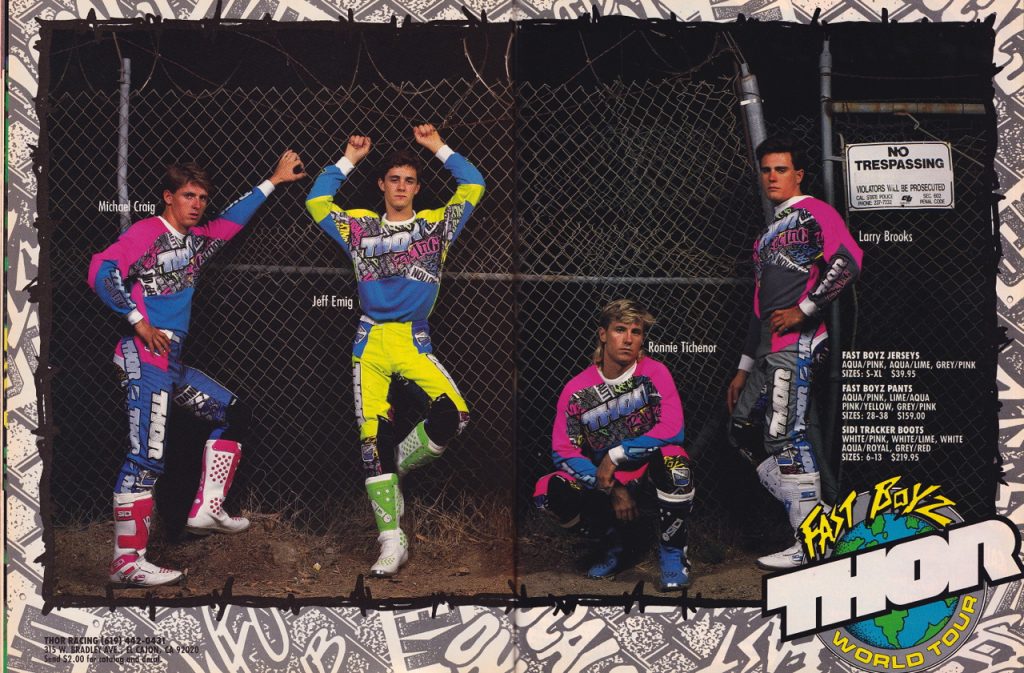 In 1990, THOR’s motocross lineup consisted of young up-and-comers like Mike Craig, Jeff Emig, and Ron Tichenor paired with journeymen such as Larry Brooks. While all of them were well-known and fairly successful, none of them had the cache of an established star like Ricky Johnson. Photo Credit: THOR
In 1990, THOR’s motocross lineup consisted of young up-and-comers like Mike Craig, Jeff Emig, and Ron Tichenor paired with journeymen such as Larry Brooks. While all of them were well-known and fairly successful, none of them had the cache of an established star like Ricky Johnson. Photo Credit: THOR
In 1989, Fox suffered another blow when an in-house Hondaline gear squabble led to the departure of Fox’s biggest star Rick Johnson to JT Racing. The JT pairing did not prove to be the shot in the arm the brand needed, however, as lackluster designs and a season cut short by injury failed to deliver the success both parties had expected. A lackluster 1990 season left JT and Johnson both looking for a new start and this opened the door for THOR to make a play for the seven-time AMA champ.
 There are not a lot of “iconic” THOR looks from the eighties and early nineties, but this Fast Boyz gear passes muster for many. Photo Credit: THOR
There are not a lot of “iconic” THOR looks from the eighties and early nineties, but this Fast Boyz gear passes muster for many. Photo Credit: THOR
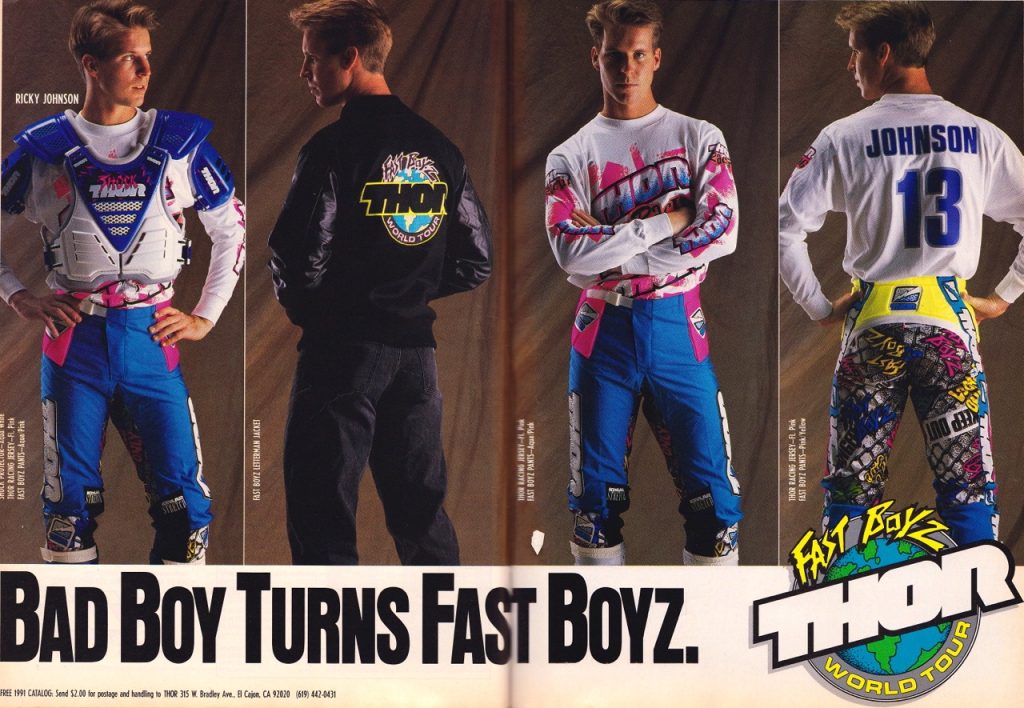 At the time, I was not a big fan of the Fast Boy gear or the Bad Boy’s move to THOR. Even today, the sight of RJ in THOR just looks wrong to me. Photo Credit: THOR
At the time, I was not a big fan of the Fast Boy gear or the Bad Boy’s move to THOR. Even today, the sight of RJ in THOR just looks wrong to me. Photo Credit: THOR
At the time, Johnson’s move to THOR was considered quite a big deal. He was easily the biggest star the brand had had in their gear since the retirement of De Coster despite his disappointing 1990 season. After his 1989 wrist injury, Johnson had shown flashes of his old speed winning races at Unadilla and Gatorback, but those wins were few and far between. Many fans were still waiting for the old RJ to materialize, and he remained one of the sports brightest stars despite his struggles the previous two seasons.
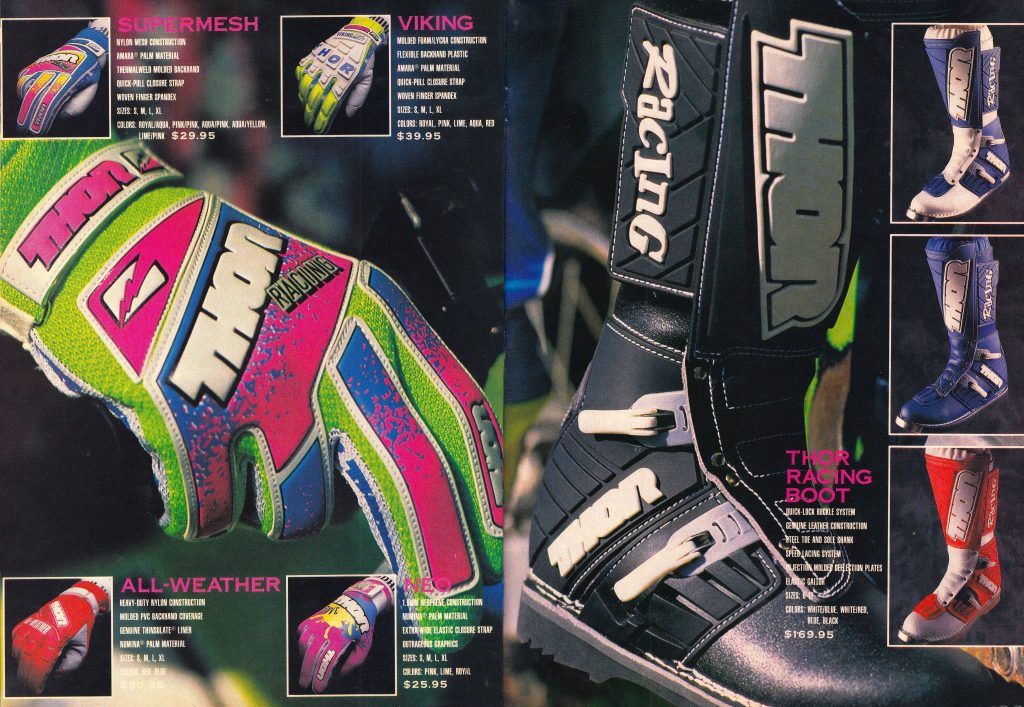 Compared to today’s minimalist gloves these 1991 offerings look like Medieval suits of armor. Velcro on boots was all the rage in the late eighties and early nineties and I preferred its convenience over the seventies-era boots with 86 buckles to fiddle with. Photo Credit: THOR
Compared to today’s minimalist gloves these 1991 offerings look like Medieval suits of armor. Velcro on boots was all the rage in the late eighties and early nineties and I preferred its convenience over the seventies-era boots with 86 buckles to fiddle with. Photo Credit: THOR
Unfortunately for THOR and RJ, his 1991 season would be short-lived and disappointing. At the time, no one outside of the RJ inner circle had any idea just how serious the lingering issues with his wrist injury were, and Johnson would only make it to round five in San Diego before calling it a career. After the injury, Johnson’s right wrist never returned to its previous flexibility, and he suffered several incidents where it locked up and did not allow him to safely operate the throttle. After one too many of these close calls, Johnson chose to retire rather than endanger himself or his competitors. With this, the RJ era of THOR was over basically before it even got started.
 Because of RJ’s short run with the brand in 1991, the Fast Boyz look is associated far more with Yamaha’s 125 ace Jeff Emig. Photo Credit: THOR
Because of RJ’s short run with the brand in 1991, the Fast Boyz look is associated far more with Yamaha’s 125 ace Jeff Emig. Photo Credit: THOR
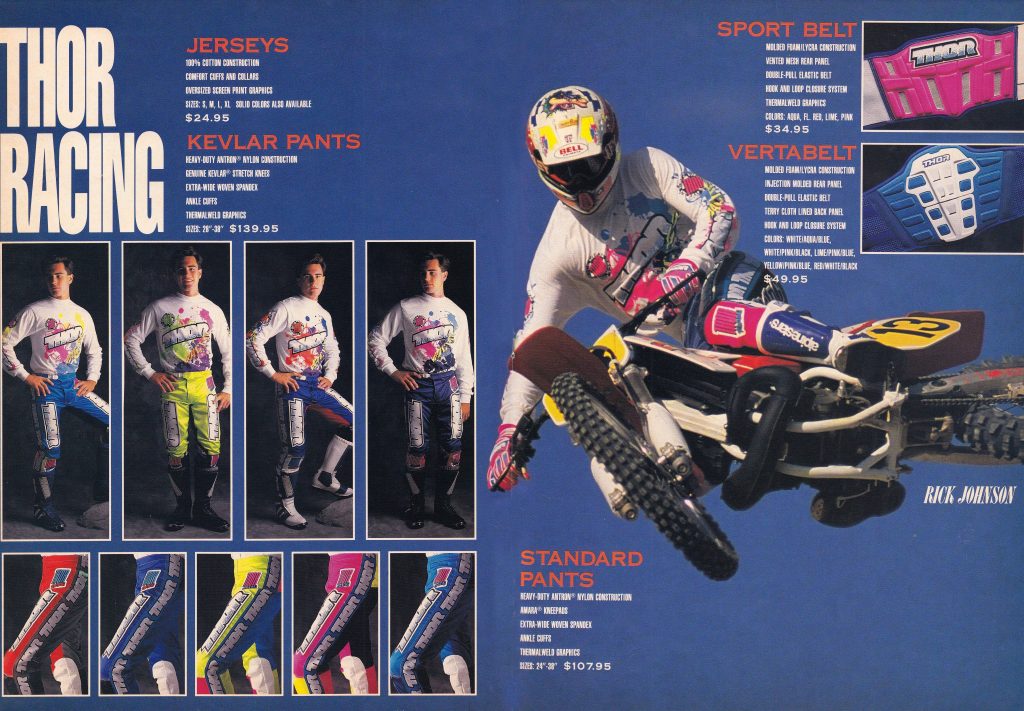 Aside from the Fast Boyz line, the rest of THOR’s 1991 lineup was pretty 90’s neon standard. Photo Credit: THOR
Aside from the Fast Boyz line, the rest of THOR’s 1991 lineup was pretty 90’s neon standard. Photo Credit: THOR
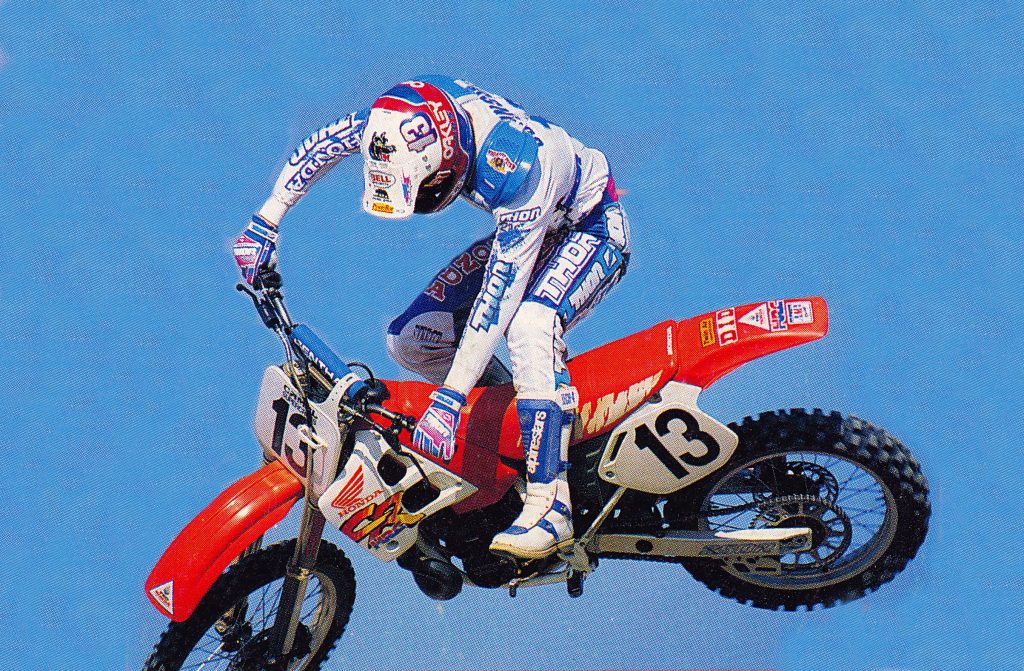 Pictures of RJ in THOR are rare, and I don’t think the pairing worked out to the expectations of either party. Photo Credit: Dirt Rider
Pictures of RJ in THOR are rare, and I don’t think the pairing worked out to the expectations of either party. Photo Credit: Dirt Rider
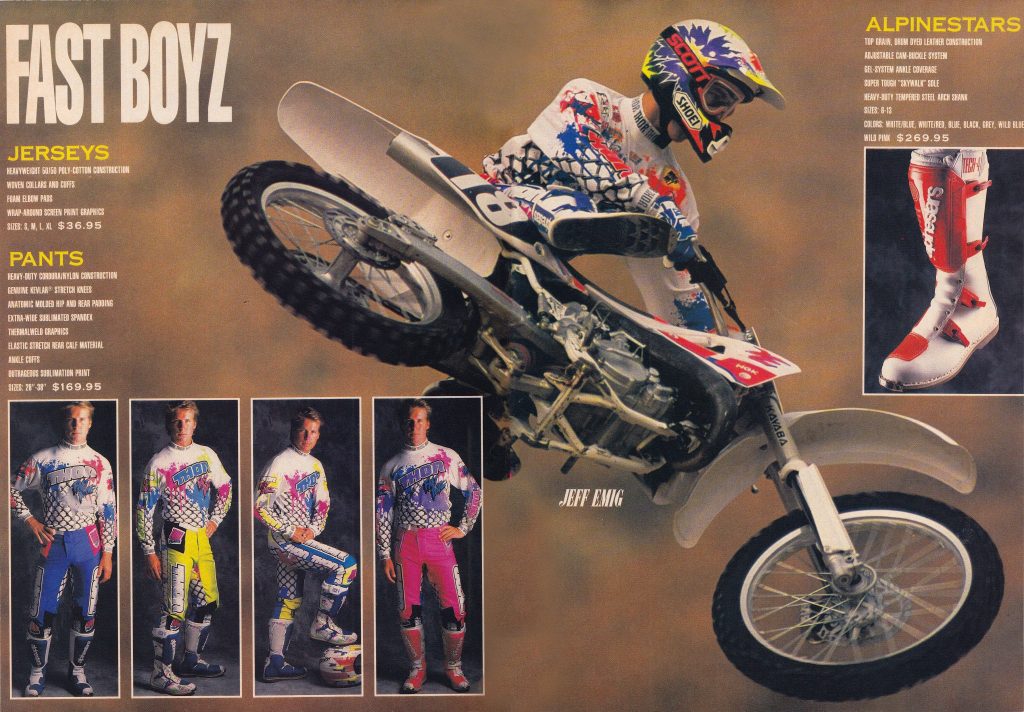 After the retirement of Johnson, Jeff Emig was thrust into the position of THOR’s biggest star. Photo Credit: THOR
After the retirement of Johnson, Jeff Emig was thrust into the position of THOR’s biggest star. Photo Credit: THOR
With RJ’s departure from the limelight, THOR’s focus was moved to Yamaha’s Jeff Emig, who was moved to the point man for their new Fast Boyz gear. At the time, Emig was still in the 125 class, but his speed and style on the bike were already apparent. A year later, Emig would take his THOR gear to the brand’s first AMA National Motocross championship and be catapulted into superstardom on his Steve Butler-tuned YZ125.
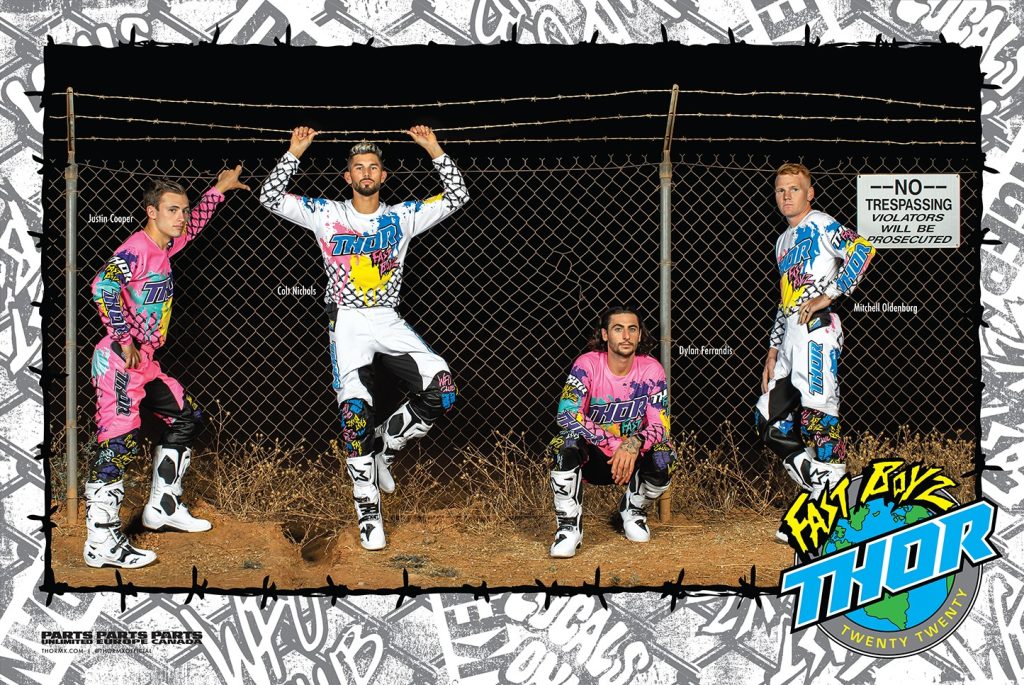 Thirty years later, THOR would bring back the Fast Boys gear and recreate its iconic 1990 ad with new stars Justin Cooper, Colt Nichols, Dylan Ferrandis, and Mitchell Oldenburg. Photo Credit: Thor
Thirty years later, THOR would bring back the Fast Boys gear and recreate its iconic 1990 ad with new stars Justin Cooper, Colt Nichols, Dylan Ferrandis, and Mitchell Oldenburg. Photo Credit: Thor




